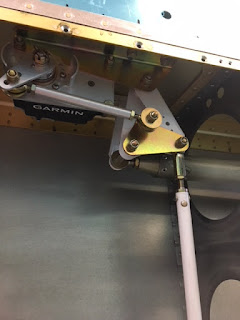This first became a problem for the F-623A clips that couple the mid and aft fuselages. In the picture you will see the plans-built version all primed and ready to go. The non-primed are the ones I remade to solve the edge distance problem as evident by the "x" on the part, where the hole would have ended up.
Everything was going great until I arrived at the F-719 installation. These parts are "joggled" to overlap the F-904 bulkhead. My parts didn't fit very well; and the rivet would have been right at the jog. I ended up adapting, as builders often do, and used a second angle piece as shown in the picture. I will round the edges so that these pieces play nice with the passengers.

Following others advice, I was very careful to measure all edge
distances before drilling. Some are VERY close. I followed the plans and
drilled the holes in the F-713 longeron on the center line, this puts
the hole in the F-9101 close to the edge. But there is also a 3/16" bolt
that goes thru this longeron for the front tank mount; everything must
be dead nuts on. The F-9101 needs to have the edges radius per the
plans, otherwise the holes in F-713 are pushed pretty far off as shown
in the picture.
So far the kit pieces do fit together very well. I think most of my trouble has been operator error. No more beer for you- Seinfeld
























